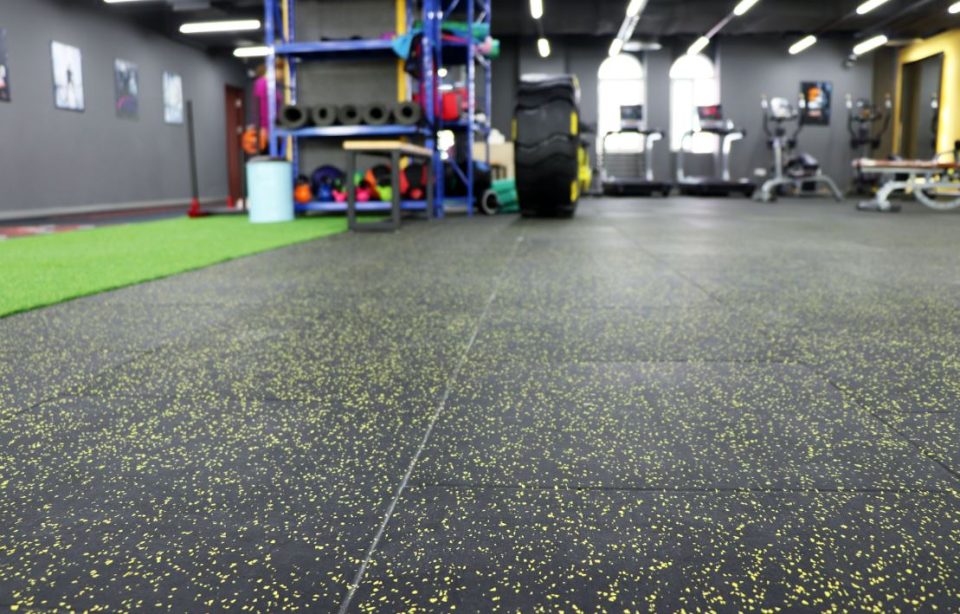In today’s world, where environmental awareness is no longer optional but essential, every design decision counts. From energy-efficient appliances to sustainable building materials, homeowners and businesses alike are making conscious choices that benefit both the planet and their spaces. One standout material making waves in the world of eco-friendly interiors is recycled Rubber flooring. Once primarily associated with gyms and industrial spaces, recycled rubber flooring is now being embraced for its sustainability, versatility, and style.
Let’s explore how this material is transforming interiors and why it’s fast becoming a go-to choice for green-minded designers and homeowners.
From Waste to Worth: The Origins of Recycled Rubber Flooring
Recycled rubber flooring typically comes from post-consumer sources, primarily used car and truck tires. The process involves grinding down old tires into crumb rubber, which is then cleaned, processed, and bound together with eco-friendly adhesives or binders to form durable flooring tiles, sheets, or rolls.
What makes this remarkable is the sheer volume of tires being diverted from landfills. According to the U.S. Environmental Protection Agency (EPA), approximately 290 million tires are discarded each year in the U.S. alone. By repurposing these into flooring, manufacturers are giving new life to materials that would otherwise contribute to long-term waste and pollution.
Why Recycled Rubber Flooring is a Sustainability Win
Choosing recycled rubber flooring isn’t just about durability — it’s about making an eco-responsible statement. Here’s why:
Reduces landfill waste: Every square foot of recycled rubber flooring represents tires kept out of landfills, where they could take centuries to break down.
Minimizes resource consumption: Rather than creating new materials, recycled rubber flooring repurposes existing ones, conserving raw resources like petroleum. Energy-efficient production: Producing flooring from recycled rubber generally requires less energy compared to creating synthetic flooring materials from scratch.
Longevity and low maintenance: Rubber flooring is exceptionally durable. It resists dents, cracks, and stains, reducing the need for frequent replacements — which in turn means fewer materials consumed over time.
Indoor air quality benefits: Many modern recycled rubber products are made with low-VOC (volatile organic compounds) adhesives and finishes, supporting healthier indoor air.
Where Eco-Friendly Meets Design Versatility
Gone are the days when rubber flooring meant dull, industrial-looking black tiles. Today’s recycled rubber options come in a variety of colors, patterns, and textures that can enhance almost any interior style.
Residential spaces: Imagine a kitchen with speckled gray and white rubber flooring that mimics terrazzo, or a vibrant playroom with colorful rubber tiles that cushion tumbles and add playful charm. Rubber flooring is also popular in laundry rooms, home gyms, and basements, where moisture resistance is a priority.
Commercial interiors: Offices, retail stores, and hospitality spaces are embracing rubber flooring not just for its eco-credentials but for its noise-dampening and comfort properties. It provides a modern, sleek look that complements contemporary design.
Custom designs: Many manufacturers now offer custom colors and embedded patterns, enabling designers to create unique, branded, or artistic floor visuals — all while staying green.
Performance Benefits that Support Sustainability Goals
Recycled rubber flooring isn’t just good for the environment — it’s good for your space.
Comfort underfoot: The natural elasticity of rubber provides cushioning that reduces fatigue in workspaces or kitchens where people stand for long periods.
Slip resistance: This makes it a safe choice in areas prone to moisture, such as entryways, bathrooms, or mudrooms.
Sound absorption: Rubber’s acoustic qualities help reduce noise transmission, making it ideal for multi-story buildings or shared spaces.
Easy maintenance: Rubber floors are simple to clean and don’t require harsh chemicals, further supporting a low-impact lifestyle.
The Future: Innovations in Recycled Rubber Flooring
As demand grows for sustainable building materials, recycled rubber flooring continues to evolve. New manufacturing techniques are enhancing aesthetics — think rubber flooring that convincingly mimics wood, stone, or even metallic finishes. Some brands are incorporating bio-based binders to replace synthetic adhesives altogether, making the flooring even greener.
Emerging technologies also include sensor-enabled rubber floors for smart homes and commercial buildings, combining sustainability with innovation. These floors can integrate heating elements, track foot traffic, or support underfloor energy systems — all while remaining eco-friendly.
How to Choose the Right Recycled Rubber Flooring
If you’re considering rubber flooring for your next project, here are some tips: Look for certifications: Choose products with third-party certifications like FloorScore®, Greenguard®, or Cradle to Cradle® that verify low emissions and sustainable practices.
Ask about the percentage of recycled content: Not all rubber flooring is created equal. Hgher post-consumer recycled content typically means greater environmental benefit. Match to your design vision: From subtle neutrals to bold brights, select colors and patterns that complement your space while aligning with your sustainability goals.
Final Thoughts
Recycled rubber flooring Dubai is proof that sustainability and style can go hand in hand. As more people seek to reduce their environmental impact without compromising on performance or aesthetics, this material is finding its place in homes, offices, and beyond. Whether you’re renovating a room, building a new space, or simply seeking durable, eco-friendly flooring options, recycled rubber flooring offers a smart, responsible, and beautiful solution.
Ready to make a green choice for your next project? Consider recycled rubber flooring — where waste meets wonder.

